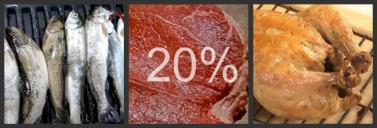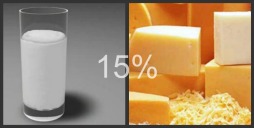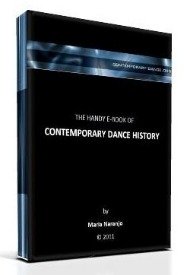THE DANCER DIET
How to eat is a common question among dancers. Non dancers usually also ask about the dancer diet, because they associate the beauty and health of some dancers’ bodies with what they eat.
That association is only partially true. As you may know, a healthy and efficient body needs to be cultivated through a balanced diet and a healthy dance practice that suits each person. There is no ‘magical dancer diet’ or ‘secret way of eating’ among dancers. Instead, the so acclaimed ‘dancer’s beauty’ is gained through a general healthy way of living, of which the dancer diet is only one aspect.
You might be thinking about ballet, because many people admire the thinness of its dancers. It is not a rule, but trying to be so slim implies a high risk of acquiring feeding disorders. That is a real threat for the health of anyone, so it is very important that dancers understand that a deliberate diet should aim to give them health and efficiency over aesthetic goals.
One important value of contemporary dance is the fact that it has an immense field of creative and expressive possibilities, which include and accept the human body in its multiple forms. Therefore, the search for ideal, stereotyped or according-to-fashion bodies is not a rule and is even rejected.
So, I will be describing a dancer diet that focuses on the maintenance of health and an effective capability to perform. Yet in the long term, the beautiful bodies that people want to have, may appear as a secondary effect of its proper application.
Eating, together with breathing, is one of our two ways of acquiring the basic energy to be alive. But, the way in which that energy has an effect on us does not only depend on what we eat. It is also affected by its relation to our unique constitution, the moment in which we eat, the type of food we choose, the amounts that we ingest and the intention whith which we eat.
So, before you continue reading, I must say that the best way of eating that I know at the present time is the one recommended by the Ayurvedic tradition. Please take your time to read this article before you continue with this page:
CONNECT DEEPER TO YOUR BODY THROUGH AYURVEDIC COOKING, The Dance Thinker, Issue #19.
Now, if Ayurveda is not your path yet, continue reading this page and adjust its tips to your own unique needs and constitution. There is a fine frontier between adjusting for health and beeing indulgent with one's learned customs and whims. Always remember that health is the main goal.
WHAT - HOW MUCH – WHEN
Now, it is very important to remember that the effects of food are not restricted to giving us physical, brute force or making us slim or fat.
The general way in which we eat determines our mental skills and mood as much as our different possibilities of physical expenditure of energy. So, it is even more important to be careful about it, for the dancer needs the three of those to be able to perform difficult choreographic routines or bear long working days (class – rehearsal – performance…).

I believe dancers should maintain a diet which is similar to the one of any other person. Adjustments should only be made in the amounts of food, in order to fit the extra spending of energy each dancer accomplishes.
The main rule of a healthy diet with which the majority of nutritionists agree is BALANCE.
Balance means that:
1. You eat foods in the right amounts from each one of the food groups.
2. The amounts are adequate to the specific person and her/his spending of energy.
Balance is the appropriate WHAT, HOW MUCH and WHEN for you. This means that the amounts of food should always be relative to your size and to the amount of energy you spend.
The following are the five main food groups, as generally recognized, and in their respective daily proportions:
- Fruits and vegetables (30%)
- Carbohydrates: found in foods such as bread, pasta, potatoes, rice or corn (30%)
- Proteins: found in meat, fish, poultry or eggs (20%)
- Milk and dairy products: like cheese or yogurt (15%)
- Fats and sugar: butter, oils, sauces and all type of candy (5%)





That’s for the WHAT and HOW MUCH.
Now, WHEN to eat those:
According to the majority of nutritionists, it is recommended to break feeding in five or six meals during the day, instead of eating great amounts of food, for example just in three meals a day. This should help maintaining more stable levels of sugar in blood and therefore would help to avoid huge appetite attacks or weakness, caused by long fasting periods.
This means that you can have the three common main meals (breakfast, lunch and dinner) in a moderate and balanced proportion so that you can still eat two or three smaller snacks in between.
Ideally, we should eat something at least every three or four hours during wakefulness time. This is even more important if you will be training and rehearsing hard, so remember to carry healthy small snacks with you, to avoid low and high peaks of your metabolic rhythm.
TIPS for your dancer diet:
-Water is a necessary complement of the balanced dancer diet. Remember that being thirsty is a sign of being dehydrated already, so you should not wait until then, but drink measured amounts regularly. Drinking water is recommended before, during and after rehearsals as well as at least one glass when you wake up. If you want to stay environmentally friendly, remember to avoid buying water bottles each time and choose to carry your own...
-Think ahead and plan to bring along what you need for the long days of class, rehearsal, and performance.
-Take a good breakfast, even if you don´t feel hungry when you wake up. It doesn’t have to consist of big amounts, but you should have at least a bit of each one of the main groups of food. This will help you avoid great appetite urges, dizziness or weakness later during the day.
-Include protein in every main meal. Not only this will regulate your appetite greatly, but you will assure your iron reserves (this is very important for girls, for they have monthly losses of blood during the period).
-Don’t forget: 5 serves of raw fruits and/or vegetables daily.
- If sticking to this dancer diet is too difficult for you, implement it gradually. Trying to change feeding habitudes in a radical way might give you too much stress and creates the risk of getting an eating disorder syndrome.
- Give yourself a small treat from time to time. It is said that the inclusion of this practice might help to gradually assume better feeding habits.
- Portion sizes: if you think you’re keeping a balanced diet, but still feel overfeed or overweighed, it might be a matter of the size of your food portions. Think of 'down-sizing' everything proportionally and gradually, until you feel you have reached a healthy state.
- If you can afford medical blood and clinical tests from time to time, invest on them. Following medical advice can always be a good guide to measure your understanding and good use of the balanced dancer diet.
Related readings
Connect deeper to your body through Ayurvedic cooking
Is it important to become thin to do contemporary dance?
Please notice:
-This content is of high quality but is provided for general information only. It should not be treated as a substitute for the medical advice of your own doctor or any other health care professional. contemporary-dance.org is not responsible or liable for any diagnosis made by a user based on the content of this page. Always consult your own doctor if you're in any way concerned about your health.
-The content displayed in the ads of this page is not produced by contemporary-dance.org.
Español. Dieta para bailarines
Return from The Dancer Diet to Contemporary Dance Home Page
The handy e-book of CONTEMPORARY DANCE HISTORY:
The Dance Thinker is our occasional E-zine. Fill in the form below to receive it for free and join us.
Read:
"The Dance Thinker"
BACK ISSUES
Post contemporary dance announcements (workshops, auditions, performances, meetings and important news... it is free.)



